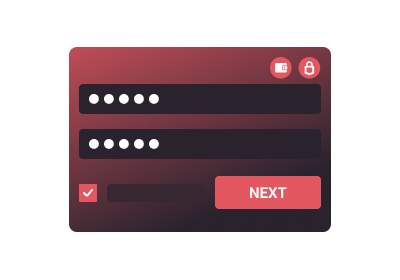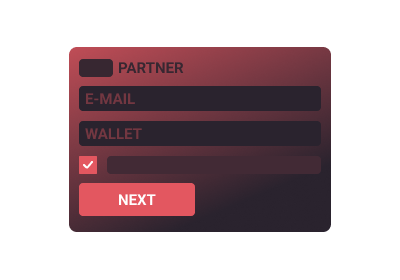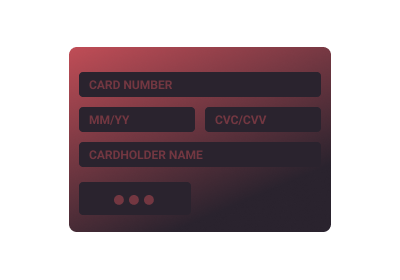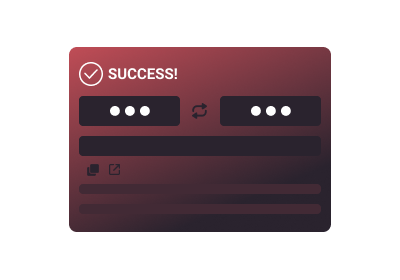Buy Monero with a credit card
You can buy XMR for USD and other fiat currencies here at SwapSpace! We provide an easy way to do that via one of our partners, such as Mercuryo, Guardarian, or Simplex, with a few simple steps right on this page. You can also look at Monero price dynamics and history, get some answers to your questions, and find some useful links to read more about what is XMR.
Monero live price chart
XMR price can be volatile. You can see the history of price changes in the cryptocurrency price chart below to help you make the best decision while considering buying crypto.
What is Monero?
Monero (XMR) is a privacy-focused cryptocurrency launched in 2014 by a group of developers, including Riccardo Spagni and a pseudonymous contributor named “thankful_for_today.” Its blockchain is designed to prioritize anonymity, ensuring that transaction details such as sender, receiver, and amount remain confidential.
Monero operates on a Proof-of-Work (PoW) blockchain, similar to Bitcoin, but with enhanced privacy features. Its total supply is uncapped, meaning that Monero will continue to mint coins indefinitely at a fixed rate after reaching its primary emission target.
Key features of XMR
- Privacy-first design: Utilizes technologies like Ring Signatures, Stealth Addresses, and RingCT (Confidential Transactions) to obscure transaction details.
- Fungibility: Monero’s focus on privacy ensures that all XMR tokens are treated equally, avoiding blacklisting issues.
- Decentralization: Monero is resistant to ASIC mining, making it accessible to a broader range of miners.
- Untraceable transactions: Ensures complete financial anonymity for users.
- Open-source and community-driven: Maintained by a global network of developers and contributors.
Monero is widely used for private payments, decentralized finance, and as an investment in privacy-oriented digital assets.
The average fees on the XMR Network
The Monero network offers relatively low transaction fees compared to many other cryptocurrencies. At the current XMR to USD price of approximately $150, the average fee for a transaction on the network is typically around:
- 0.0001 to 0.002 XMR, depending on transaction size.
- Equivalent in USD: Ranges between $0.01 to $0.30.
These low fees make Monero an attractive choice for users seeking cost-efficient private transactions.
The XMR coin wallets
Monero can be stored securely using various wallets. Here are five popular options:
- Monero GUI Wallet: An official desktop wallet with a focus on full-node functionality and privacy.
- MyMonero: A lightweight web wallet offering convenience for everyday transactions.
- Cake Wallet: A user-friendly mobile wallet with support for Monero and other cryptocurrencies.
- Ledger Nano S/X: A hardware wallet ensuring cold storage and security for XMR.
- Edge Wallet: A multi-currency mobile wallet that supports Monero alongside other major cryptocurrencies.
Where to buy Monero
Monero (XMR) is available on numerous cryptocurrency exchanges. For the cheapest way to buy Monero, use SwapSpace, which offers competitive rates and a simple purchasing process.
How to buy XMR with credit card
Follow these simple steps to buy XMR instantly on SwapSpace:
- Visit SwapSpace and select Monero (XMR) as the cryptocurrency you want to purchase.
- Choose a payment method, such as a credit or debit card, fiat currency, Google Pay, or Apple Pay.
- Enter the amount of XMR you want to purchase and provide your wallet address.
- Confirm the transaction details and proceed with the payment.
- Receive your Monero in your wallet within minutes.
What can I do with Monero after purchase?
After purchasing Monero, you can use it in various ways:
- Private payments: Make anonymous peer-to-peer transfers without revealing transaction details.
- Decentralized finance (DeFi): Engage in DeFi platforms supporting Monero.
- Trading: Trade XMR against other cryptocurrencies to diversify your portfolio.
- Investing: Hold Monero as a long-term investment in privacy-centric digital assets.
- Support for privacy: Donate or pay for services anonymously using Monero.
You can buy XMR right here on SwapSpace — look below to find an instruction on how to buy Monero.
How to buy XMR on SwapSpace
On this page, we put USD in the “You send” and XMR in the “You get” sections in the widget. USD is the default, but you can choose your preferred fiat currency. Put in the amount of fiat you want to spend. Next, press the ”View offers” button and choose a provider.

Fill in the “Enter the recipient address” field with the destination Monero address. Check the information carefully and click the “Next” button. After reading the special terms and conditions in the next window, click “Next” again.

At this point, you will either see our partner’s widget or be redirected to another page, depending on the chosen provider. You will be asked to verify your identity, as this is standard practice for the services that work with fiat money. Follow the provider’s instructions on the screen.

After completing the KYC procedure, fill in your credit card information. At this point, everything is in place and your transaction will start.

Wait for the transaction to process. You’ll see a message when it’s completed. A window with your transaction details will also appear; from there, you can also create another crypto-fiat exchange.

Frequently asked questions
Which payment methods are accepted for crypto purchases via SwapSpace?
How long does it take to buy XMR crypto?
Is there a way to predict Monero future price?
Are there limits for buying Monero?
Can I purchase XMR with other crypto instead of fiat?
Curious for more?
Join our newsletter — stay informed, stay empowered.
